Creating a peaceful outdoor retreat doesn’t require acres of land or a professional landscaper. Your home garden can become a tranquil escape with thoughtful planning and simple design choices that prioritize both beauty and serenity. Whether you’re working with a sprawling backyard or a modest patio, these ideas will help you cultivate a space that soothes the soul while enhancing your property’s appeal.
From fragrant herb corners to relaxing spaces, these home garden concepts focus on creating harmony between nature and design. Each suggestion is designed to be achievable for gardeners of all skill levels, emphasizing low-maintenance options that provide maximum relaxation benefits.
12 Home Garden Ideas for Ultimate Outdoor Serenity
1. Design a Dedicated Herb Garden Section
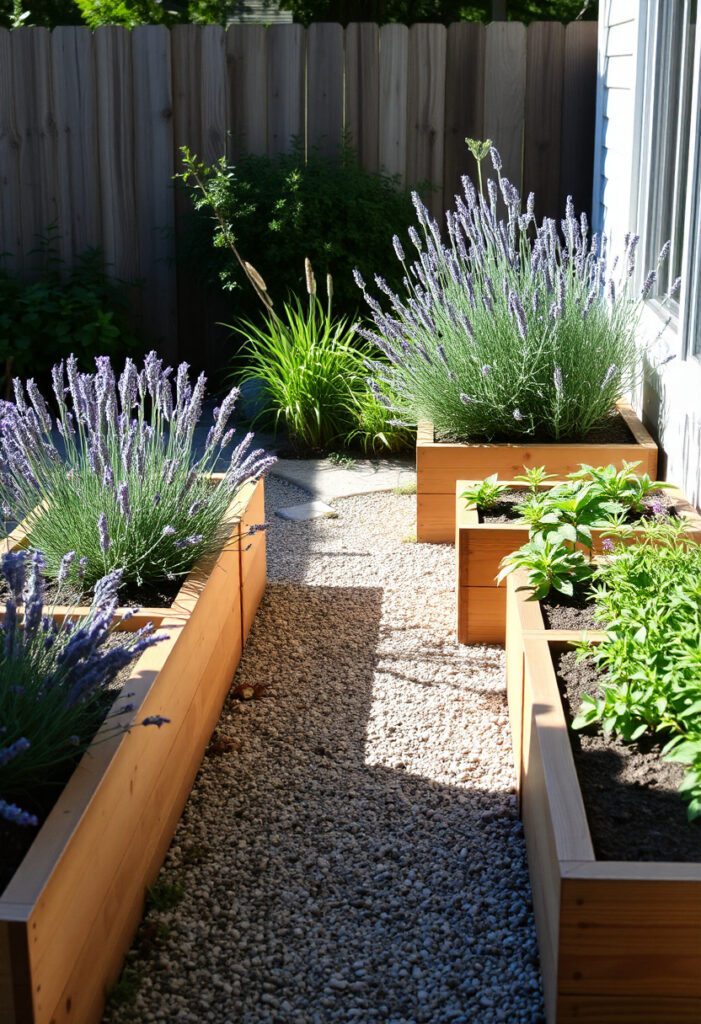
Transform a sunny corner of your yard into an aromatic herb garden that serves both culinary and therapeutic purposes. Plant lavender, rosemary, and mint in raised beds for easy maintenance and visual appeal. The gentle fragrances naturally promote relaxation while providing fresh ingredients for cooking.
Create defined pathways between herb sections using gravel or stepping stones. This home garden feature combines practicality with sensory pleasure, making it perfect for those who want their outdoor space to serve multiple purposes.
2. Create Layered Planting Beds
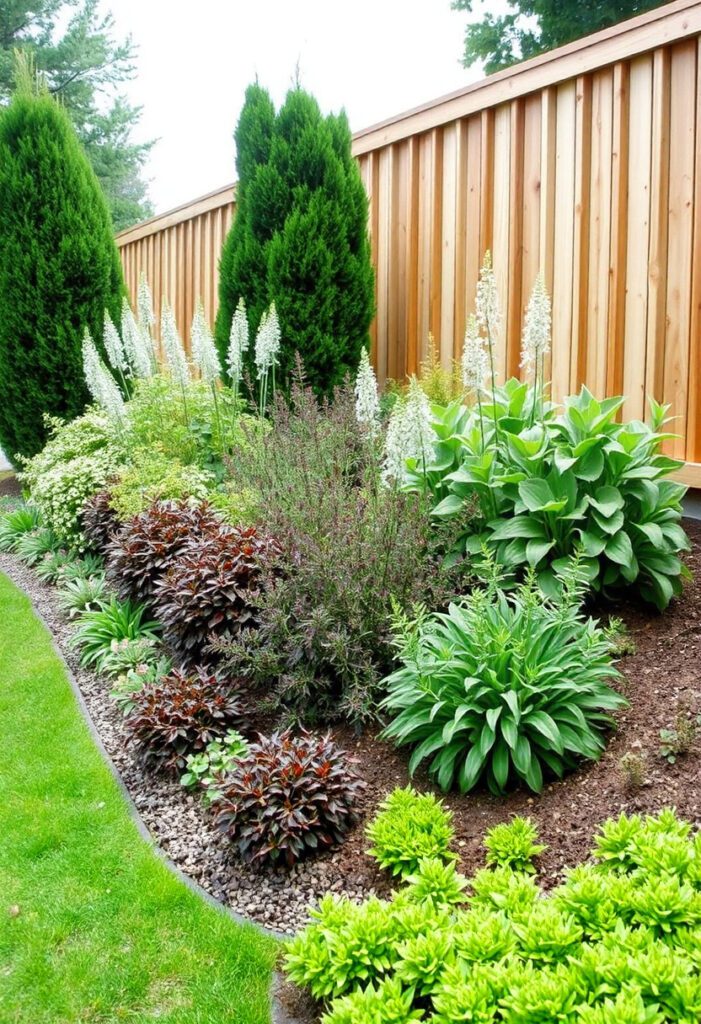
Build visual depth and natural flow with layered plantings that mimic nature’s organic patterns. Use tall shrubs as backdrop plants, medium perennials in the middle, and low groundcovers in front. This technique creates privacy while establishing a sense of enclosure that feels protective and calm.
Choose plants with different blooming seasons to ensure year-round interest. Varied textures and heights make small home garden spaces appear larger while providing habitats for beneficial wildlife.
For bedroom ideas, check out 18 Neutral Summer Bedroom Ideas for a Cozy Look.
3. Build Comfortable Seating Areas
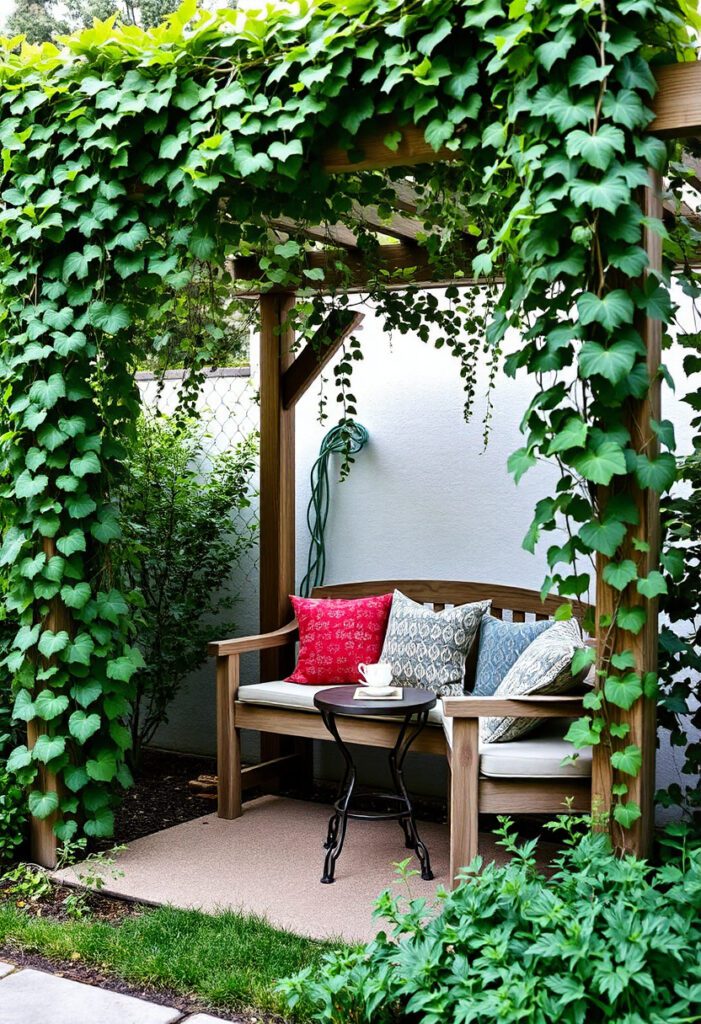
Every peaceful garden needs spots for quiet contemplation and relaxation. Install weather-resistant benches, swing chairs, or built-in seating that invite you to linger outdoors. Position seating to take advantage of morning sun, evening shade, or beautiful views.
Consider multiple seating areas for different times of day and activities. Reading nooks, conversation areas, and solitary retreat spots serve different needs while maximizing your garden’s usability throughout the seasons.
4. Plant a Moon Garden with White Flowers

Create an evening retreat with white and pale-colored flowers that glow in moonlight and twilight hours. Choose night-blooming jasmine, white roses, and silver-leafed plants that reflect available light while releasing gentle fragrances after dark.
Add solar lighting or soft LED fixtures to enhance the ethereal quality. Moon gardens extend outdoor enjoyment into evening hours when many people have more time to relax and unwind from daily stresses.
5. Design Meandering Pathways
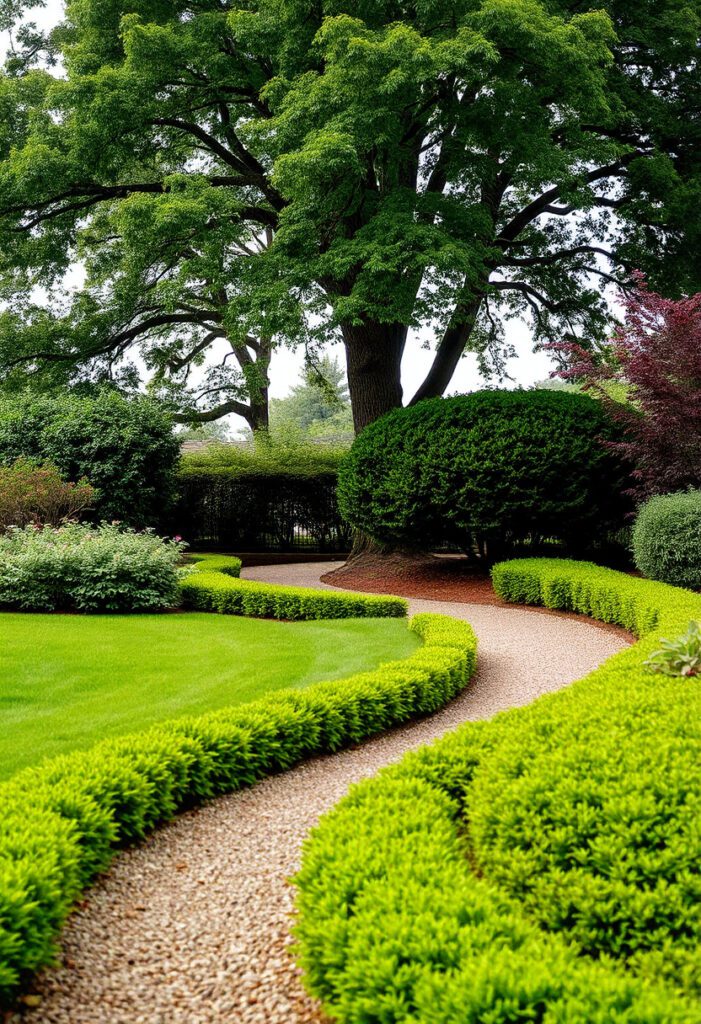
Replace straight walkways with curved paths that encourage slow, contemplative movement through your space. Use natural materials like flagstone, wood chips, or gravel to create routes that feel integrated with the landscape rather than imposed upon it.
Wider paths accommodate comfortable strolling, while narrower routes create intimate discoveries. Meandering pathways make home garden exploration feel like a journey rather than simply moving from point A to point B.
6. Incorporate Fragrant Plants Throughout
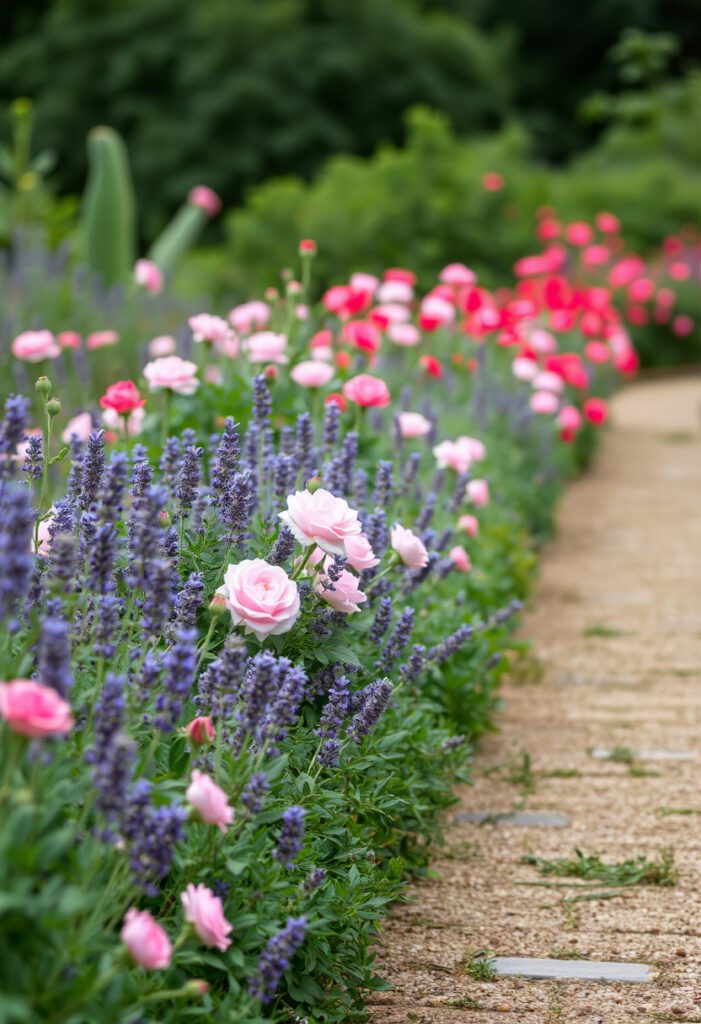
Engage the sense of smell with strategically placed aromatic plants that release pleasant scents when brushed against or warmed by the sun. Position fragrant roses near seating areas, plant aromatic herbs along pathways, and choose flowering shrubs with subtle perfumes.
7. Create Vertical Growing Spaces
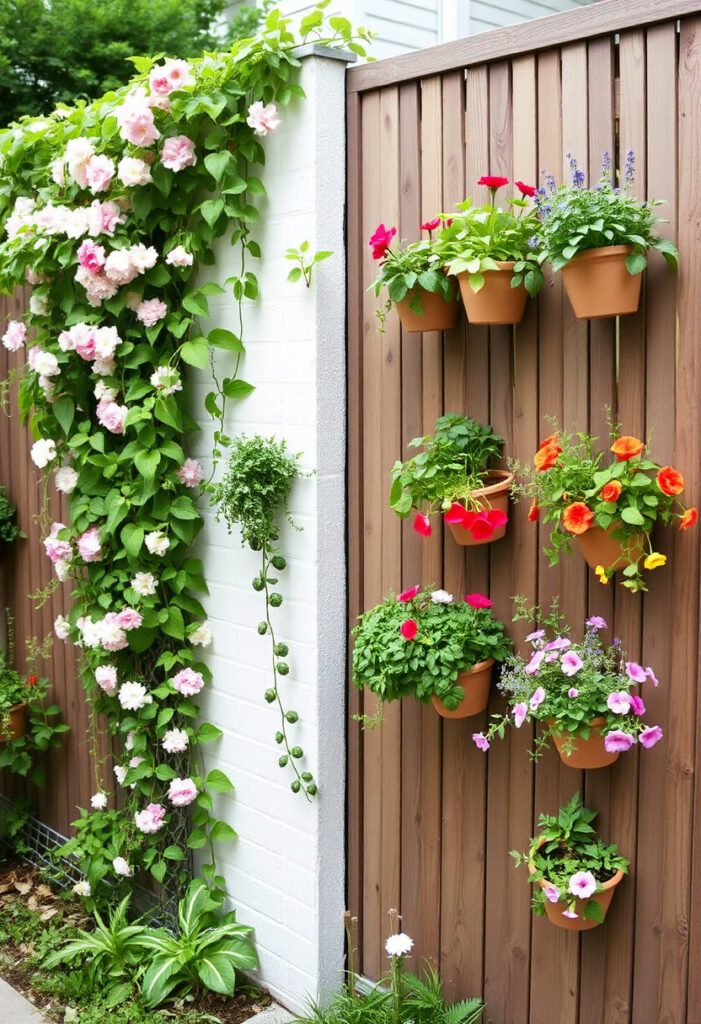
Maximize planting opportunities in small areas with vertical gardens, trellises, and climbing plant supports. Train flowering vines up pergolas, install wall-mounted planters, and use tall containers to add height without consuming ground space.
Vertical elements also provide privacy screening and noise reduction. These space-saving home garden solutions work perfectly for urban settings where horizontal space is limited but vertical opportunities abound.
8. Establish Wildlife-Friendly Zones

Create habitats that attract birds, butterflies, and beneficial insects by choosing native plants and providing water sources. Install bird feeders, butterfly gardens, and bee-friendly flowering plants that support local ecosystems while adding movement and life to your space.
Wildlife activity provides natural entertainment and connects your garden to the broader environment. These eco-friendly home garden features demonstrate environmental stewardship while creating opportunities for nature observation and education.
9. Design Rain Gardens for Natural Beauty
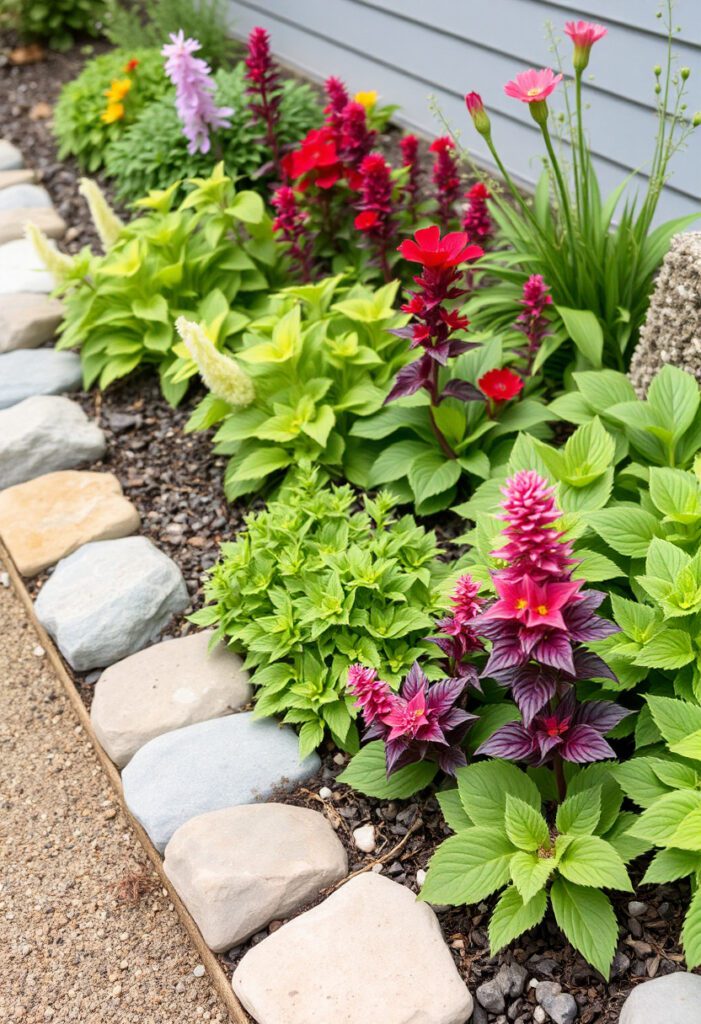
Transform problem drainage areas into beautiful rain gardens that manage water runoff while creating attractive planting opportunities. Choose moisture-loving plants like astilbe, cardinal flower, and native grasses that thrive in occasionally wet conditions.
Rain gardens reduce environmental impact while adding unique design elements. These sustainable home garden features solve practical problems while contributing to local water management and creating habitat for amphibians and beneficial insects.
💡 Planning a bedroom update and don’t know where to start?
The Bedroom Styling Starter Kit includes:
✅ A printable checklist to organize layout, lighting, and decor
✅ A simple budget tracker to keep you on track
👉 Grab your copy here for $5.99
10. Build Raised Beds for Easy Maintenance
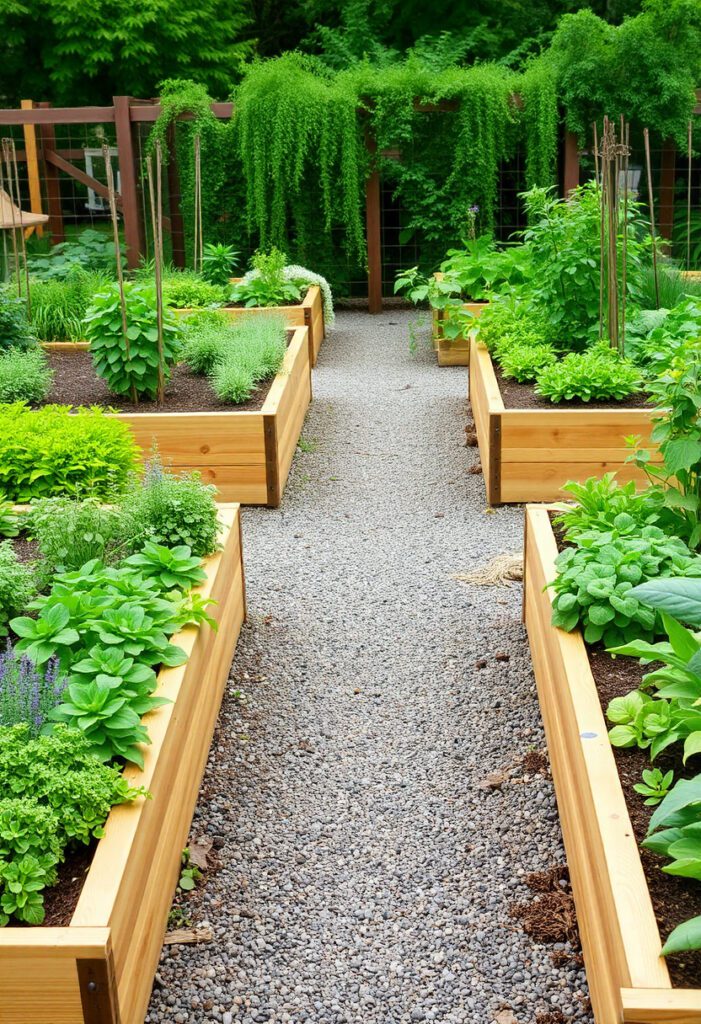
Reduce physical strain and improve growing conditions with raised planting beds that bring soil level closer to comfortable working height. Use cedar, stone, or composite materials to create attractive containers that drain well while requiring less bending and kneeling.
Raised beds also provide better soil control and pest management. These accessible home garden features make gardening enjoyable for people with mobility limitations while creating clean, organized growing spaces.
11. Establish Seasonal Interest Areas
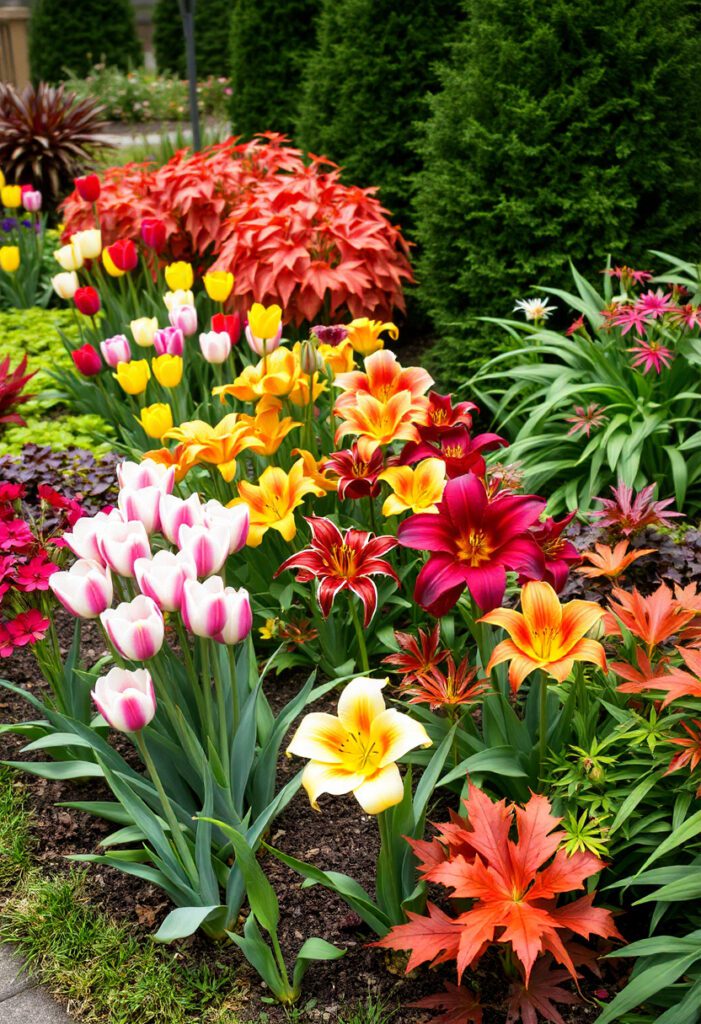
Plan plantings that provide visual appeal throughout the year with careful attention to seasonal changes, dormant periods, and maintenance requirements. Choose spring bulbs, summer perennials, fall foliage plants, and winter evergreens that ensure something beautiful is always happening in your space.
Include plants with interesting bark, seed pods, or winter silhouettes. Year-round appeal keeps home garden spaces engaging during all seasons while reducing the boom-and-bust cycles that leave gardens looking bare for months.
12. Design Container Gardens for Flexibility
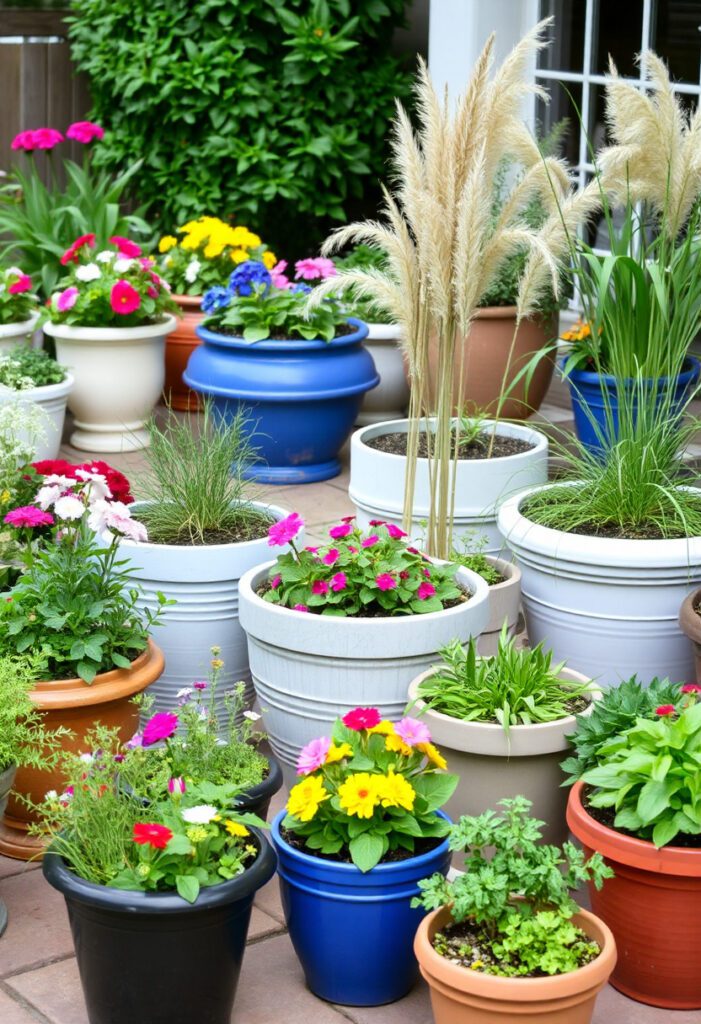
Use pots, planters, and containers to create flexible growing spaces that can be rearranged, seasonally refreshed, and easily maintained. Group containers of different sizes and materials to create dynamic displays that can evolve with your changing preferences and needs.
Container gardens work especially well for renters, small spaces, and experimental plantings. This adaptable approach to home garden design allows for creative expression without permanent commitments or major landscape modifications.
🛋️ Ready to Style Your Dream Living Room?
The **Living Room Styling Starter Kit** makes it easy to plan, style, and budget your space.
✅ A 2-page Printable Styling Checklist to guide you through each step
✅ A Cozy Decor Budget Tracker to help you keep your spending on target
🖨️ Print-friendly & instantly downloadable
Planning Your Calming Home Garden Space
Start with a thorough assessment of your available space, including sun exposure, soil conditions, and existing features. Note areas that receive morning sun, afternoon shade, and full sun throughout the day, as these factors will determine plant selection and seating placement.
Consider your maintenance preferences and available time for garden care. Choose projects and plants that match your lifestyle and experience level. Beginning gardeners should focus on proven, low-maintenance options before attempting more complex designs or demanding plants.
Develop a realistic budget that accounts for both initial installation and ongoing maintenance costs. Quality materials often cost more initially but provide better long-term value through durability and reduced replacement needs.
Create a phased implementation plan that spreads costs and work over time. This approach allows you to live with initial changes, learn from experience, and make adjustments before committing to larger projects or investments.
Maintenance Tips for Peaceful Gardens
Establish consistent watering schedules that work with your daily routine and local climate patterns. Morning watering reduces evaporation and disease problems while ensuring plants have adequate moisture during hot afternoon hours.
Choose plants that naturally thrive in your local climate and soil conditions rather than fighting environmental factors with excessive amendments, irrigation, or chemical treatments. Native plants typically require less maintenance while supporting local wildlife populations.
Implement seasonal maintenance routines that keep gardens looking tidy without requiring daily attention. Weekly weeding, monthly pruning, and seasonal fertilizing provide structure while preventing small problems from becoming major issues.
Keep garden tools clean, sharp, and properly stored to make maintenance tasks easier and more enjoyable. Quality tools last longer and make garden work more efficient, encouraging regular care that prevents neglect.
Sustainable Practices for Long-Term Success
Incorporate composting systems that recycle organic waste into valuable soil amendments. Kitchen scraps, grass clippings, and fallen leaves can be transformed into rich compost that improves soil health while reducing household waste.
Install rain collection systems that reduce water consumption while providing chlorine-free irrigation for sensitive plants. Simple rain barrels or more elaborate cistern systems both contribute to environmental sustainability.
Choose organic pest and disease management methods that protect beneficial insects while addressing garden problems. Companion planting, beneficial insect habitats, and organic treatments maintain ecological balance.
Select plants that provide multiple benefits such as food production, wildlife habitat, and aesthetic appeal. Multi-purpose plants maximize garden value while reducing space requirements and maintenance needs.
How Do I Start a Home Garden for Beginners?
Begin with soil testing to understand your growing conditions and choose plants that will thrive naturally in your environment. Contact your local extension office for affordable soil testing services and plant recommendations specific to your area.
Start small with container gardens or a single raised bed rather than attempting to landscape entire yards immediately. Success with small projects builds confidence and skills that make larger undertakings more manageable and enjoyable.
Choose easy-care plants like marigolds, zinnias, herbs, and leafy greens that forgive beginner mistakes while providing quick results. These reliable performers help new gardeners develop basic skills without frustrating failures.
Focus on learning one new technique or plant type each season rather than trying to master everything at once. Gradual skill building creates sustainable gardening habits that lead to long-term success and enjoyment.
What Are the Best Plants for Low-Maintenance Home Gardens?
Native plants adapted to your local climate require minimal water, fertilizer, and pest control once established. Research indigenous species through local botanical gardens, extension services, or native plant societies for specific recommendations.
Perennial plants return year after year, reducing replanting work while developing stronger root systems that withstand weather extremes. Choose long-lived perennials over annual flowers for less work and better long-term value.
Drought-tolerant plants like sedums, ornamental grasses, and Mediterranean herbs thrive with minimal irrigation once established. These resilient choices reduce water bills while providing attractive, low-care landscaping options.
Ground covers that spread naturally reduce weeding and mulching requirements while providing attractive living carpets. Select appropriate ground covers for sun or shade conditions to minimize maintenance while maximizing coverage.
How Much Does It Cost to Create a Home Garden?
Basic container gardens can be started for under $100 including pots, soil, and starter plants. This approach allows experimentation with different plants and arrangements before committing to larger investments in permanent installations.
Raised bed gardens typically cost $200-500 depending on size and materials chosen for construction. Cedar and composite materials cost more initially but last longer than untreated wood, providing better long-term value.
Professional landscape design and installation can range from $1,000-10,000 depending on project scope and local labor costs. Many homeowners reduce expenses by purchasing plants themselves and handling simple installation tasks while hiring professionals for complex work.
DIY approach saves 50-70% compared to professional installation but requires time investment and basic tools. Consider your available time, physical capabilities, and learning preferences when deciding between professional and self-installation options.
What Tools Do I Need for Home Garden Maintenance?
Essential hand tools include a sharp spade, pruning shears, hand weeder, and garden gloves for most routine maintenance tasks. Quality tools last longer and make work more comfortable, encouraging regular garden care that prevents major problems.
A garden hose with adjustable nozzle or watering can provides flexible irrigation options for different plant needs. Soaker hoses and drip irrigation systems reduce water waste while providing consistent moisture for established plantings.
Wheelbarrow or garden cart makes moving soil, mulch, and plant materials much easier, especially for larger garden projects. These tools prevent back strain while making garden maintenance more efficient and enjoyable.
Basic power tools like hedge trimmers and leaf blowers can significantly reduce maintenance time for larger properties. However, start with hand tools and add power equipment as your garden grows and maintenance needs increase.
When Is the Best Time to Start a Home Garden?
Spring offers ideal planting conditions for most regions with warming soil temperatures and increasing daylight hours. However, garden planning and soil preparation can begin during winter months when outdoor work is limited.
Fall planting works well for trees, shrubs, and spring bulbs that benefit from cool weather establishment periods. Many perennials planted in fall develop stronger root systems and bloom better the following year.
Container gardens can be started any time during the growing season since soil conditions and drainage are controlled. This flexibility makes container gardening perfect for immediate gratification and seasonal experimentation.
Consider your local climate and frost dates when timing garden installations and plant purchases. Local extension services provide specific planting calendars and variety recommendations for optimal timing in your area.
